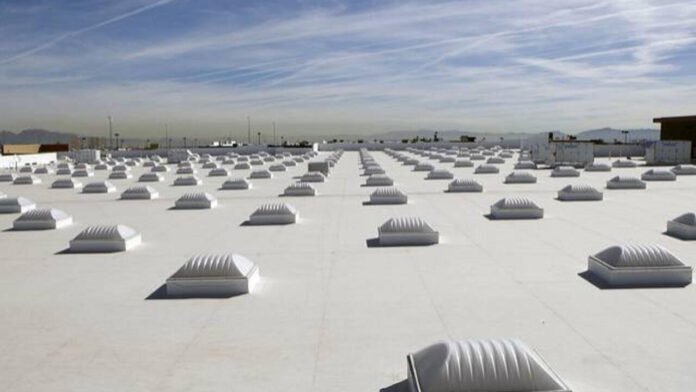These days, there are a lot of social media ads about white roof paint. They all say it can lower the temperature inside a house by 10 to 15 degrees Celsius and make the roof watertight. But do these stuff work? And how much of what they claim is true?
Real-Life Experience
Ejaz Ahmed Bhatti, who saw such an advertisement six years ago in Islamabad, decided to apply the advertised white chemical paint to his roof. He noted a temperature difference, but it was only around five to six degrees Celsius, not the 10 to 15 degrees claimed. Despite this, given Pakistan’s intense heat, Ejaz found the reduction significant.
Traditional vs. Modern Methods
Historically, people used traditional methods like applying mud or palm leaves to their rooftops to mitigate heat. Over time, conventional methods have been increasingly replaced by modern white paints that use chemicals.
Difference Between Regular and Special White Paints
In 2002, Wazir Alam founded a chemical and paint company in Islamabad. He says that the standard white paint reflects sunlight but doesn’t prevent the roof surface from absorbing heat contained in sun rays. Sunlight consists of ultraviolet rays that transmit light and infrared rays that transmit heat. Ordinary white paint bounces off UV rays, not IR ones. However, Special chemical paints block both types of rays, reducing the roof’s surface temperature.
Benefits of Special Chemical Paints
Aqeel Iqbal, another paint company owner, emphasizes that for paint or chemicals to be effective, they must be well absorbed by the roof surface. This ensures the paint doesn’t peel off due to rain and fulfills its purpose. These paints help lower roof temperatures, allowing air conditioners and fans to work more efficiently and reducing electricity bills.
Application Process
Wazir Alam and Aqeel Iqbal state that average people can only apply their products with professional help. The key is to clean the roof thoroughly before applying at least two coats of paint. It ensures the paint is well absorbed, enhancing its effectiveness in reflecting sunlight and preventing heat absorption.
Expert Opinions
Abrar Ahmed, a civil engineer with Build Craft construction company, says that these chemical paints reduce indoor temperatures and benefit the building structure. They can prevent issues caused by the expansion and contraction of concrete and steel in extreme temperatures and stop water seepage.
Research Findings
Research from the China Southwest Architectural Design and Research Institute indicates that the reflective ability of white surfaces decreases when they accumulate dust, grease, and oil. However, a California’s Berkeley Lab study found that white roofs reflect up to 80% of sunlight and infrared radiation, potentially lowering temperatures by up to 31 degrees Celsius in extreme heat.
Global Impact
Berkeley Lab estimates that if such cooling paint were used globally. It could significantly reduce the warming effect of carbon emissions. A reflective concrete roof could mitigate up to 24 gigatons of carbon dioxide, equivalent to removing 300 million cars from the roads for 20 years, making it an affordable option, especially for poorer countries.


